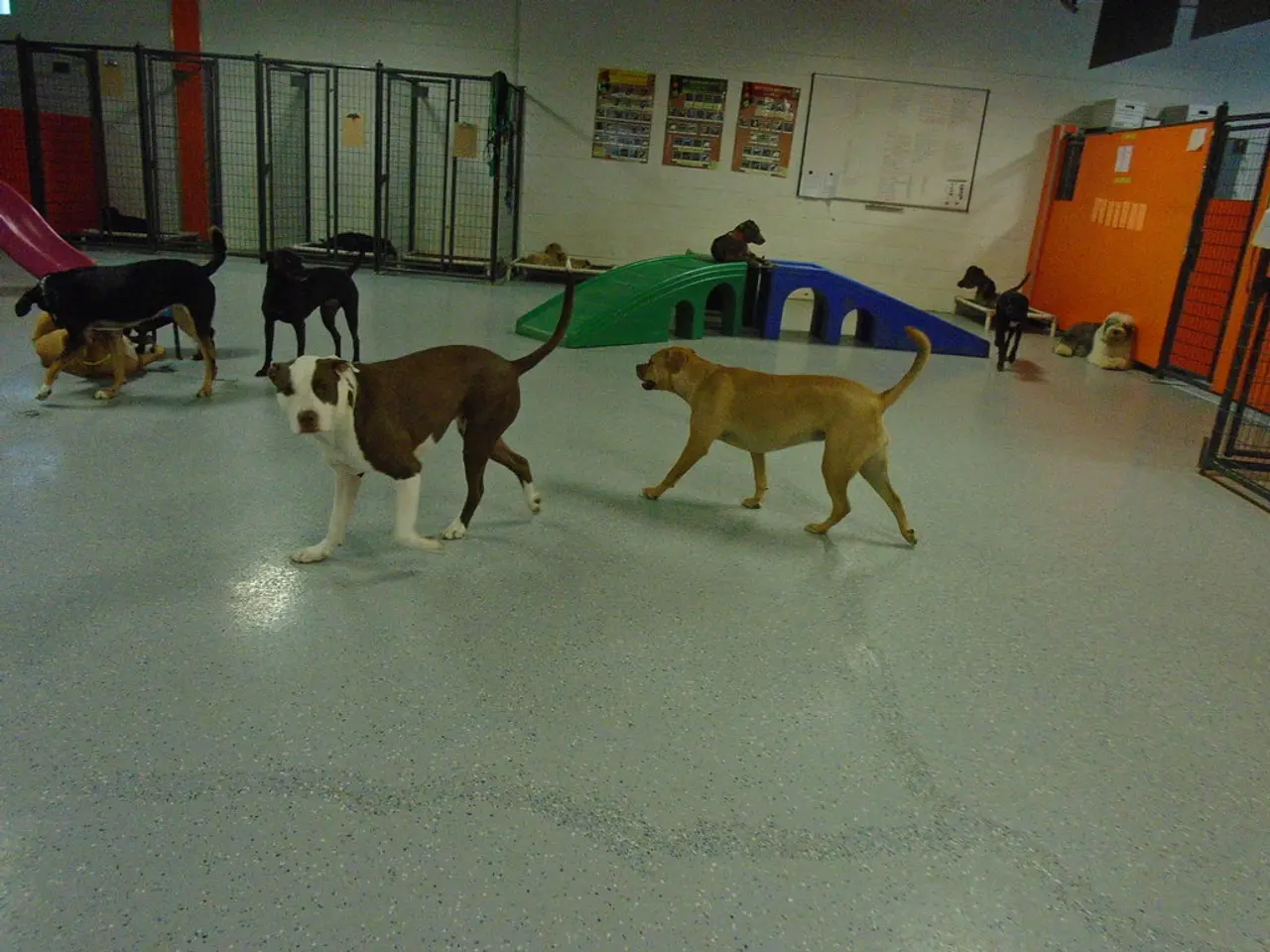Train journeys with dogs: Rules to adhere and exceptions to avoid
Traveling with your furry companion can be an exciting adventure, but it requires careful planning and preparation. Here's a step-by-step guide to help ensure a safe, comfortable, and stress-free journey for both you and your dog.
Choosing the Right Pet Carrier
Select a sturdy, comfortable, and well-ventilated carrier that is suitable for your dog's size. For smaller dogs (under about 45 cm at the shoulder), the carrier should fit comfortably on your lap or seat space. Larger dogs may travel on a leash and muzzle but often require buying a separate seat or compartment depending on the train service and local regulations.
Packing Essential Items
Bring along essential items such as water and a portable bowl, your dog’s regular food and treats (including special dietary needs), poop bags, identification and vaccination documents, a basic first-aid kit, grooming tools, cleaning supplies (wipes or pet-safe disinfectants), and comfort items such as familiar toys, a blanket, or a piece of your clothing to reduce stress.
Preparing Your Dog Behaviorally
Acclimate your dog to the carrier and train station sounds beforehand using positive reinforcement. Maintain their routine as much as possible. Offer treats for good behavior during the trip and rest stops. If your dog gets stressed easily, consult a vet beforehand about calming treatments.
Understanding and Following Train Pet Policies
Check the specific pet policy of the train operator in advance, including requirements for reservations, muzzles, leashes, and fees. Make your reservation in advance, informing the train company you will travel with a dog. Choose seats or compartments designated for travelers with pets where possible.
| Aspect | Recommendations | |-------------------------|------------------------------------------------------------------------------------------------| | Pet Carrier | Sturdy, well-ventilated, appropriate size; small dogs in carriers, larger dogs leashed/muzzled | | Essentials to Pack | Water & bowl, food & treats, poop bags, ID & vaccination papers, first-aid kit, cleaning wipes, familiar toys/blanket| | Behavioral Tips | Acclimate dog pre-trip, reward good behavior, maintain routine, consider vet advice for stress | | Train Policy & Booking | Check pet policy, book in advance, bring necessary documents, use designated pet-friendly areas|
Additional Tips
- It's important to check with your travel provider for any restrictions, such as the need for a dog crate or specific designated areas.
- Don't ignore stress signs your dog might display.
- Don't allow your dog to roam freely in the train or approach other passengers.
- Amtrak in the USA allows dogs up to 20 pounds on trips up to seven hours on most routes.
- Don't punish your dog if they have any accidents in their carrier. Stress can cause your dog to toilet as a physical response.
- Check the specific pet policies of the train company you're traveling with in advance.
- Service animals are usually allowed on all trains without restrictions.
- Don't show any stress you're feeling to your dog - take long, slow breaths and try to relax.
- Preparation is key when traveling with a dog by train.
- Don't let your dog off the leash.
- Ensure they've had plenty of opportunity to toilet and arrive at the station with plenty of time to prepare for boarding.
- Some rail services may charge a fee for dogs to travel or require a reservation for them.
- Don't leave introducing your pet carrier to your dog until the last minute. Plan in advance.
- Pack a travel kit that includes water, dog food, travel bowls, a first aid kit, comfort items from home, a spare leash, poo bags, and cleaning supplies.
- Dogs can travel on trains, but policies and restrictions vary by rail service provider.
- Plan for breaks during long journeys to let your dog relieve itself and stretch.
- Speak to the train company in advance to find out if there will be any appropriate stops on the journey for your dog to be able to alleviate themselves.
- Don't assume all train companies have the same pet policies; always verify before booking.
- Pack dog waste bags and clean up any deposits promptly.
- When choosing a pet carrier for your dog, ensure it's sturdy, well-ventilated, and suitable for your dog's size, with small dogs fitting comfortably in carriers and larger dogs traveling on a leash and muzzle, if needed.
- To avoid stress during travel, pack essential items for your dog, including water and a portable bowl, food and treats, poop bags, identification and vaccination documents, a first-aid kit, grooming tools, cleaning supplies, and comfort items.
- Before traveling, prepare your dog behaviorally by acclimating them to the carrier and train station sounds, maintaining their routine, rewarding good behavior, and considering using calming treatments if your dog becomes easily stressed.
- It's crucial to understand and follow train pet policies, such as making reservations, requirements for muzzles, leashes, and fees, and using designated pet-friendly areas.
- When traveling with your pet by train, additional tips include checking for any restrictions, being aware of stress signs, not allowing your dog to roam freely or approach other passengers, and planning for breaks during long journeys. Additionally, verify pet policies and specific requirements before booking, as they may vary by train company.





